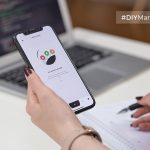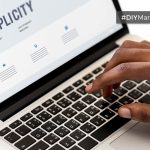The state of the agency model
So I have just come out of a meeting with 15 Agency heads called together by Adrian Hewlett of Publicis Machine, looking to implement qualification standards for the individuals in our industry. As ever, at these gatherings it’s interesting to listen to such people and discuss the state of the market and agencies in general.
With an explosion of advertising and marketing mediums in the last 20 years which are now available to the client on the route to their customer, and the number of differing types of agencies it’s a good time to have a look at the agency model and see what’s currently out there and what the future holds. I came across an erudite article by J Little of Observatory International; (great observations John) who sees 8 different models I would agree with.
- Lead agency: A continuation of the current lead agency model, but with more responsibility devolved to the lead agency to coordinate, simplify, integrate and manage budget (similar to the P&G BAL model).
- Holding company bespoke: A bespoke agency (e.g. Omnicom’s ‘We Are Unlimited’ for McDonald’s), ‘hand–picked’ from the resources of the group, covering all/most disciplines/channels, but, importantly, that “partner onsite with employees from Google, Facebook, The New York Times’ content studio etc.”
- In-house: A growing number of US marketers, in particular, have developed in-house facilities, which are extending their remit into social media, digital content and beyond. Notable examples include Sprint, Intel and Lego – albeit still partnering with agencies on occasion.
- Back to the future: The major networks will re-aggregate specialist units/disciplines (e.g. digital) into a single, multi-disciplinary ‘one-stop-shop’, with a single P&L. Publicis at the back end of 2016 and Ogilvy (in the US), this past January, announced plans to do just that.
- New wave: Consumer–centric agencies, started from scratch, which embrace the ‘whole enchilada’ (data, tech, ideation, platforms and distribution, etc).
- Core team: A lean/agile agency made up, for example, of a business person, data analyst, insights strategist, media strategist, creative director and project manager. They do ‘strategy’ and possibly ‘the big idea’, but outsource and manage implementation. A US example would be Redscout.
- The consortium: A ‘fit for purpose’ consortium of ‘equal’ players (consulting, tech, studio, publisher, and agency etc) coming together for a specific project or client.
- Consultancy-led: A version of the lead agency model in which a consultancy, such as Deloitte, leads (handling data, tech infrastructure, and strategy etc) and coordinates the other partners (some of whom may be sister companies). Accenture, Deloitte and IBM spent over $2 billion in 2016 alone acquiring agencies.
Whilst the digital world expands and changes at an exponential rate, and the roles of agencies diversify I think it’s important to remember that the agency business is essentially a simple one, no matter how many solutions we now offer.
A) Immerse yourself in the client’s business so you can see what their challenges are.
B) Clarify the objectives of clients, and demonstrate how your solution will deliver on that need.
That’s the key. There will always be a need for an agency, which can assist a client in delivering profit and that should be the core function of an agency whatever shape it choses. If it can get that credo understood by a client, it should never be short of business.




